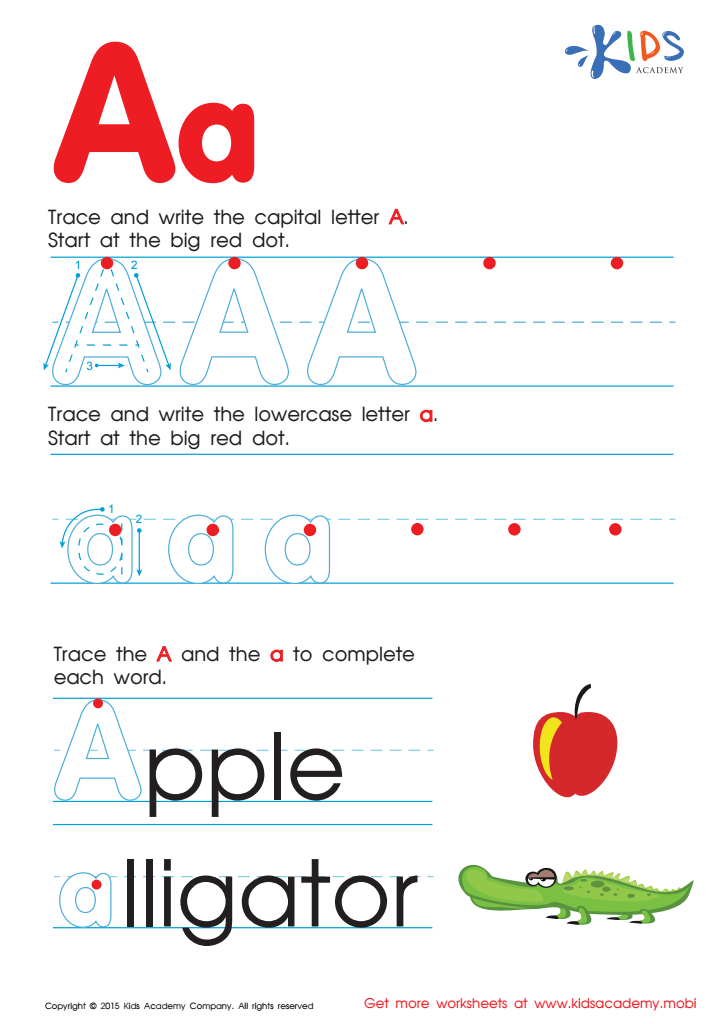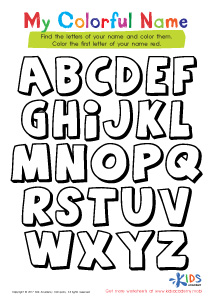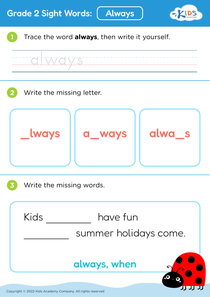Letter formation Grade 2 ABC Order Worksheets
3 filtered results
-
From - To
Enhance your second grader's writing and alphabetical skills with our comprehensive "Letter Formation Grade 2 ABC Order Worksheets." These engaging, printable worksheets are meticulously designed to help children perfect their handwriting while also mastering alphabetical order. Each worksheet provides a fun and educational activity that promotes precise letter formation, ensuring students can seamlessly create crisp, clear letters. By integrating these exercises into their routine, kids will gain confidence in their penmanship and better understand the sequence of the alphabet. Ideal for both classroom and at-home use, our worksheets make learning a delightful experience for young learners.


Letter A Tracing Page


Letter P Tracing Page


Letter G Tracing Page
Letter formation and understanding alphabetical order are foundational skills in early education, critical for Grade 2 students. Correct letter formation helps children develop legible handwriting, fostering clear communication and confidence in their written abilities. This foundation extends to fine motor skills and hand-eye coordination, supporting broader academic and daily activities. Additionally, proper letter formation reduces future writing difficulties, promoting efficient writing that transitions smoothly from one grade to the next.
Understanding ABC order reinforces essential literacy skills. It equips students with an organizational tool that underpins many academic and real-life tasks. Proficiency in alphabetical order aids in dictionary use, enhancing vocabulary and spelling skills, and allows students to locate information efficiently in books, libraries, and digital platforms. These skills are also critical for completing tasks such as catalog lookup and information retrieval, integral to both academic success and everyday situations.
Moreover, mastery of these skills boosts children's self-esteem and independence in learning. When parents and teachers prioritize letter formation and ABC order, they are laying down a strong academic foundation. This not only supports current curriculum mastery but also prepares children for future educational challenges, fostering lifelong learning habits and cognitive development.

 Assign to My Students
Assign to My Students














